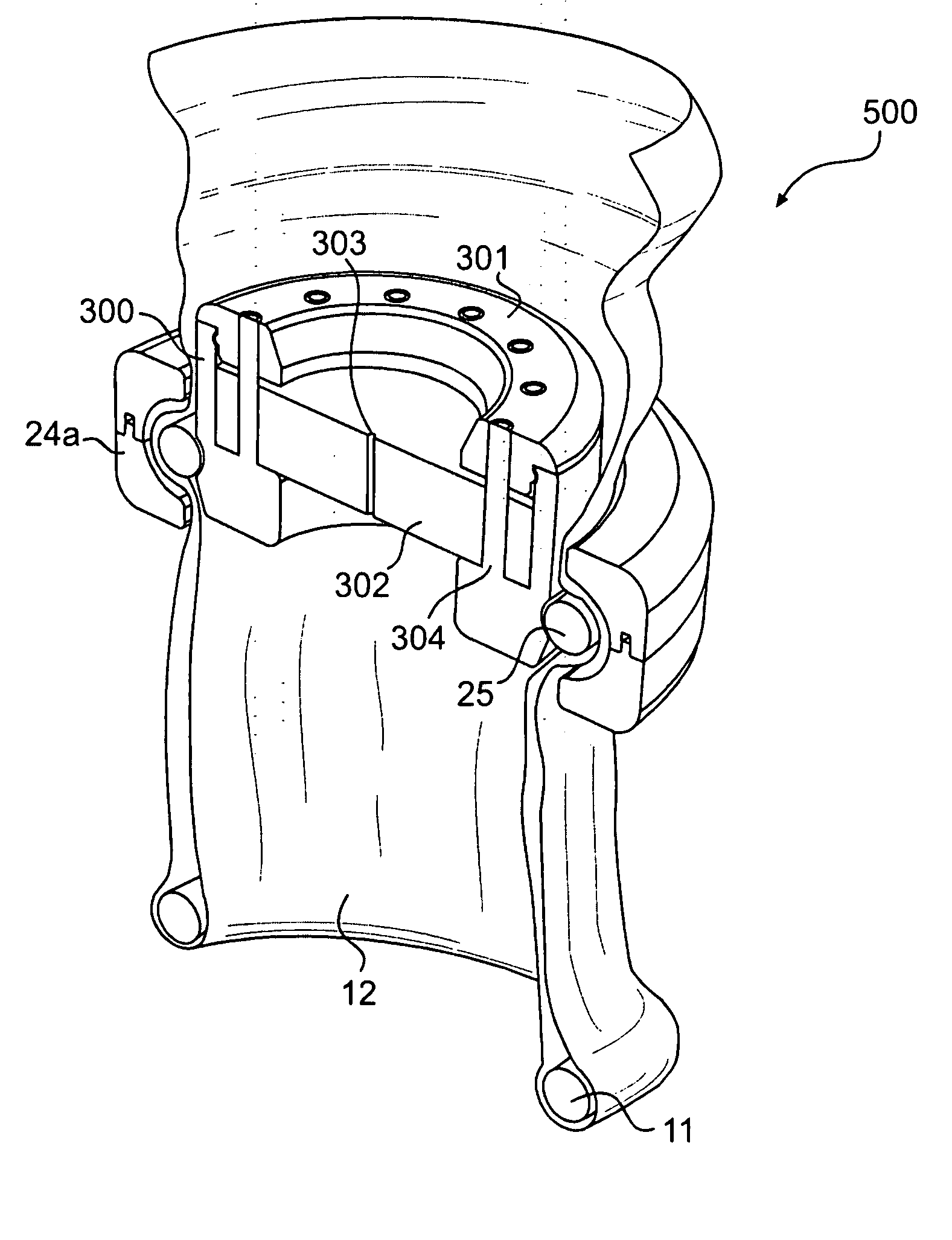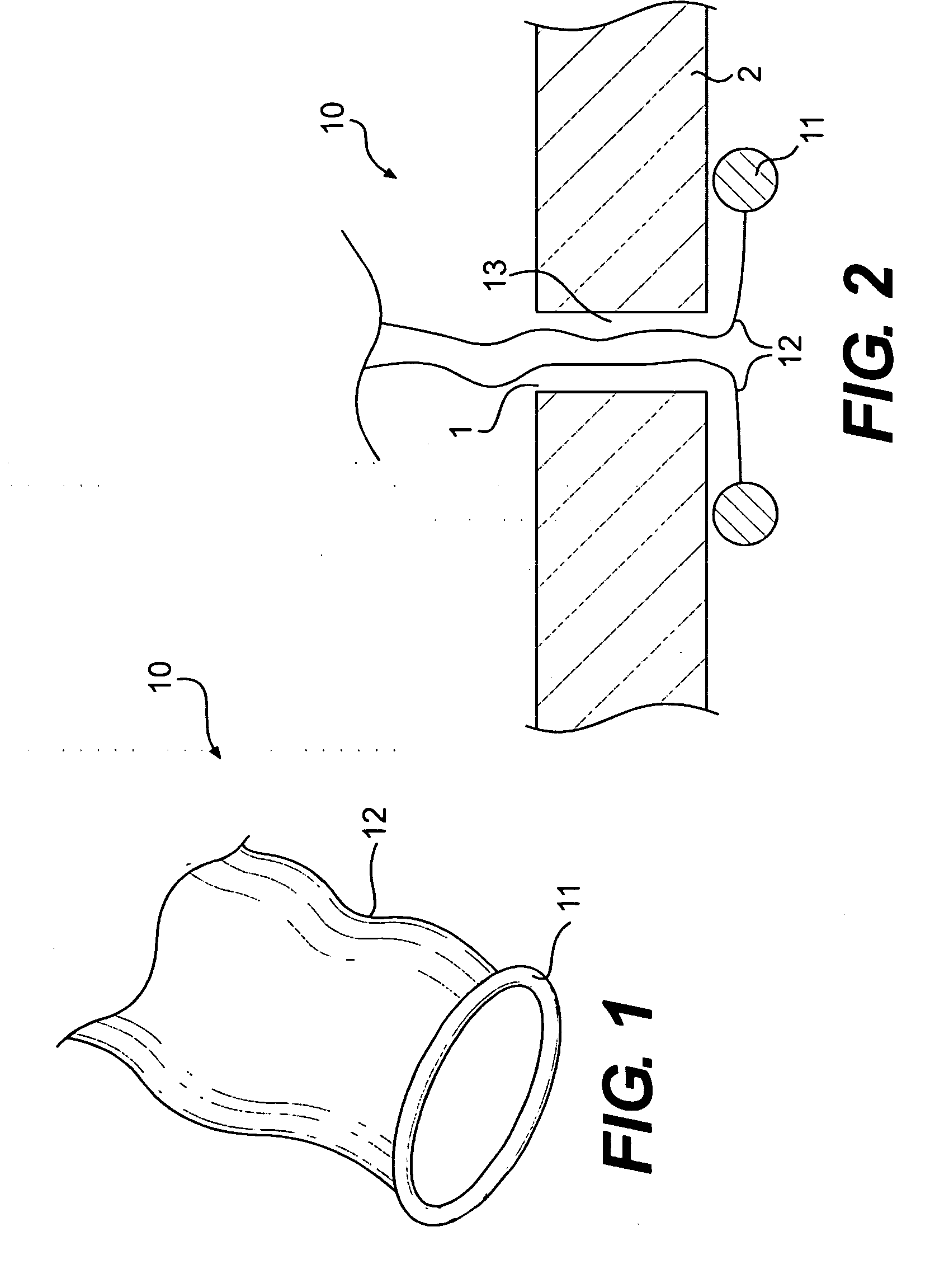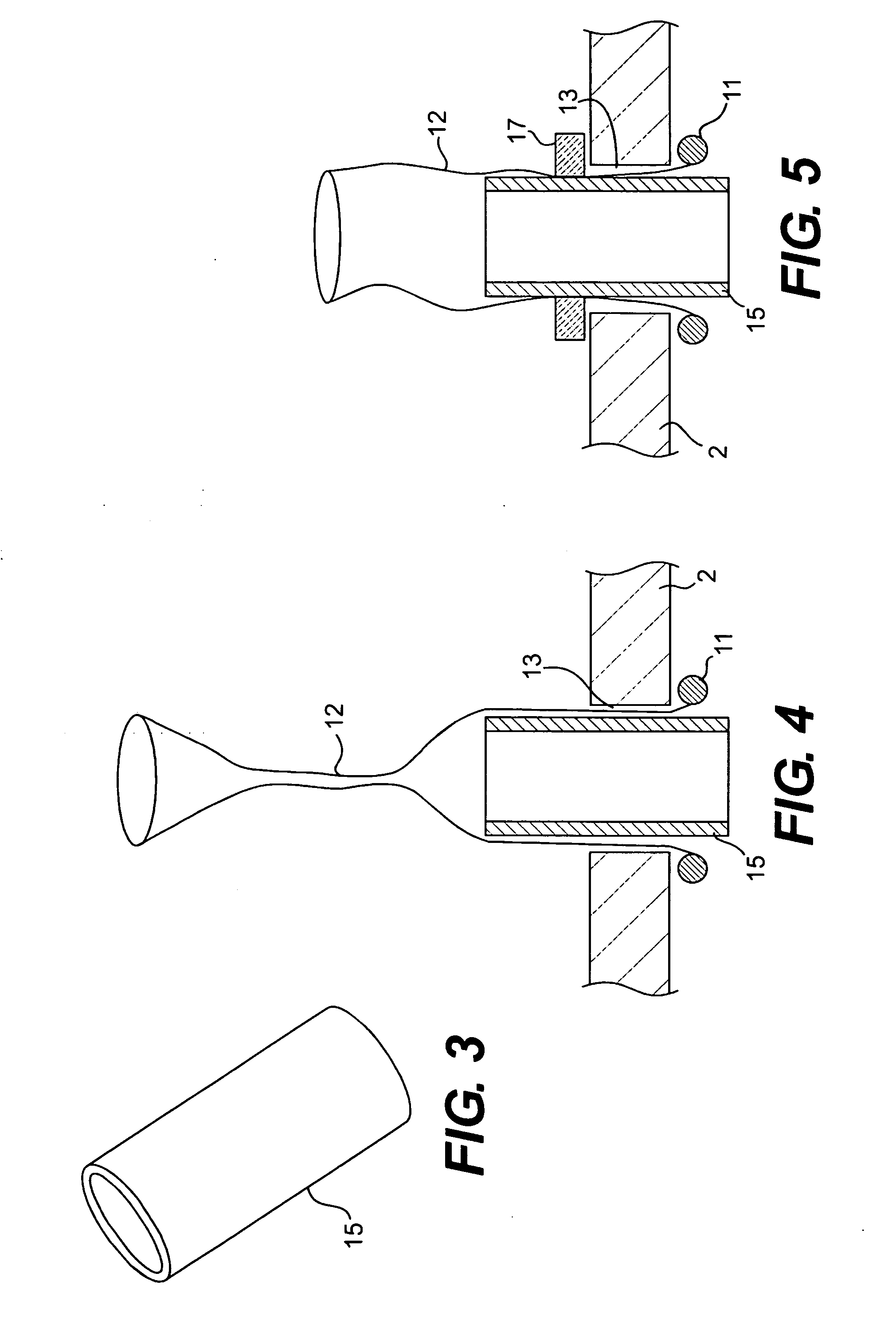Instrument access device
a technology of access device and cannula, which is applied in the field of instruments access devices, can solve the problems of therefore reach and reducing the effective length of the surgical instrumen
- Summary
- Abstract
- Description
- Claims
- Application Information
AI Technical Summary
Benefits of technology
Problems solved by technology
Method used
Image
Examples
Embodiment Construction
[0144] Referring to the drawings there are illustrated various instrument access devices of the invention for an incision 1, for example in an abdominal wall 2. The construction of the various components and their attributes will be explained in detail below. In some cases, the instrument access device is used as a substitute for a conventional rigid tubular cannula. The instrument access devices of the invention may be used to provide access to the abdominal cavity by an instrument 3, which in this case has an operating element 4, such as a surgical stapler, mounted at the distal end of a flexible shaft 5.
[0145] It will be noted that the devices have a very low profile, especially with respect to the inside of the incision 1. The devices are positively retained in the incision 1 against pull-out forces. Because of the low profile the shaft 5 of the instrument 3 can begin bending immediately after entering the abdominal cavity. The amount of free space required to manipulate the in...
PUM
 Login to View More
Login to View More Abstract
Description
Claims
Application Information
 Login to View More
Login to View More - R&D
- Intellectual Property
- Life Sciences
- Materials
- Tech Scout
- Unparalleled Data Quality
- Higher Quality Content
- 60% Fewer Hallucinations
Browse by: Latest US Patents, China's latest patents, Technical Efficacy Thesaurus, Application Domain, Technology Topic, Popular Technical Reports.
© 2025 PatSnap. All rights reserved.Legal|Privacy policy|Modern Slavery Act Transparency Statement|Sitemap|About US| Contact US: help@patsnap.com



